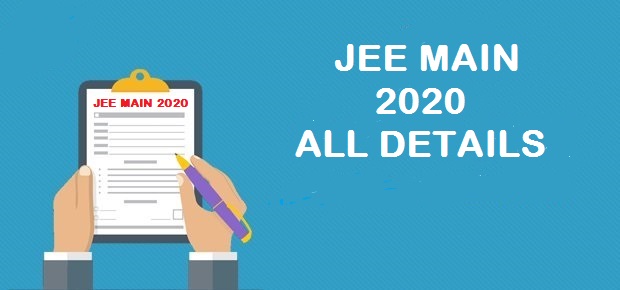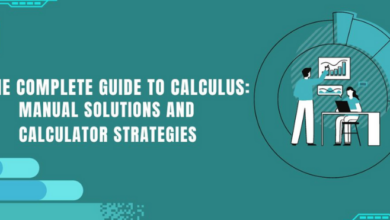
National Testing Agency has been conducting the Joint Entrance Examination for IIT and NIT admission every year. Although 2019 onwards only, NTA has started acting as the conducting body for the JEE main exam. As earlier, the national level JEE main exam was conducted by IIT (Indian Institute of Technology) only. Even now it has been held twice in the year, one in the month of January and other in April month every year.
Joint Entrance Exam has been held by the NTA for the admission in IIT, NIT and many other engineering colleges. Not just IIT and NITs, but more 800 engineering colleges in India accept JEE main score for the admission purpose in many courses. Check out the official notification, important dates, application process, exam pattern, result, cut-off, exam centres and more details regarding the JEE Main exam for next year below.
Highlights of JEE Exam
Any undergraduate, who aims to be an engineer has to pass the entrance exam called JEE Main. National Testing Agency uses to hold the exam all over India in different exam centres. Every year Lakhs and Lakhs of candidates appear for this exam but very few get selected for the IIT and NIT admission. From 2019 only, JEE main has become an online exam for the candidates. Check out the highlights of Joint Entrance Examination below-
Exam: JEE Main (Joint Entrance Examination)
Conducted by: National Testing Agency
Mode of Exam: Online
Medium: English, Hindi and other regional languages
Exam Duration: 3 Hours
Question Type: MCQs
Total Marks: Paper 1- 360 marks and Paper II- 390 marks
It has been divided into 2 papers, Paper 1 stands for candidates applying for B.E or B.Tech courses. Whereas Paper II stands for the students, who want admission in B.Arch or B.Plan. Although both the papers will be of 3 hours and MCQs. Below are the many more details of JEE main exam to be held next year.
Form, Official Notification and Important dates for UGC NET 2020
As from 2019 onwards, JEE Main has been held twice, one in the month of January and other in April. For the candidates appearing for JEE Main January 2020, the official notification will be out on the official website by the September 2019. The application process for the same will be carried out between 1-30 September 2019. Further, the correction window for the same will open in between 8-14 October 2019. Whereas the candidates will be able to download the JEE admit cards from the official website on 17 December 2019 onwards. The JEE exam and result will be carried out in the month of January 2020 only. Lastly, the All Indian Rank for the JEE main will be declared in March 2020.
For the candidates planning to appear for JEE Main April 2020, the official notification and online application process will be out February and will close in March 1st week 2020. Correction window for the same will open in March only. Admit cards for the JEE Main April will be out by the last week of April. JEE Main exam will be held on 8-20 April 2020. Further, the result for the same will be declared by last week of April or mid of May month. Lastly, NTA will announce the JEE Main All India Rank of the candidates by May 2020 only.
Registration & Application Process and Steps to Fill it
Official notification of the JEE Main exam will consist of the steps for the registration and application process as well. Candidates have to follow few steps to complete the JEE Main application process, from registration to application and uploading of the documents. There have been a total of 7 steps for the completion of JEE Main application process. Check out the same here-
At first, one has to register themselves with the help of Adhaar card
Then candidates have to fill the details asked in the online application form from personal to education.
After the same, one has to verify mobile number/ Email id for contact purpose.
Once the completion of details filling, students will have to upload images of the recent pic, signature.
Then one has to make application fee payment
Further, if some is opting for CBT, then one has to book their respective slot.
Lastly, students have to take a print out of the acknowledgement page.
As far as the JEE Main application fee is concerned, candidates applying for offline mode has to pay Rs. 500- 1000 (Paper 1 or II) and Rs. 900-1800 (for both Papers). Whereas for the online mode of exam, Rs. 250-500 (for any 1 paper) and Rs. 650 to 1300 for both papers. Whereas candidates can make the payment via credit/ debit card or Paytm or SBI buddy as well. Although candidates will be charged extra for using these modes.
Eligibility and Age limit details for JEE Main Exam
As far as the eligibility is concerned, candidates must refer to the official notification or website for the same. The minimum qualification to be eligible for the JEE Main is Class 12 with Science stream. One must have passed Intermediate or any equivalent exam in 2018 or 2019 with at least 75% marks. Whereas SC/ ST candidates must have passed the same with 65% marks. Even the who have been appearing for the Class 12 Board exam 2020 can also apply for the JEE Main exam. Although there is no age limit for the same, but the candidates can appear for JEE Main exam 3 times in their life. Although there have been no such rules for candidates belonging to SC/ST/ PwD categories.
Also, there have been different cut-off and selection criteria for different IIT/ NIT and other colleges. Even there have been reservation criteria as per the Government of India for the SC/ST, OBC and PwD candidates. Whereas for further more details regarding the same, candidates can check out the eligibility criteria on the official website/ notification only.
JEE Main Syllabus details
Further, the syllabus of JEE Main has also been divided Paper wise. The syllabus of Paper I have been a bit lengthy as it will consist of question from Mathematics, Physics and Chemistry. Mathematics subject will have questions from chapters like- Set, relations and functions, Complex number and quadratic equations, matrices and determinants, permutation and combinations, mathematical induction and its application, sequences and series, Binominal theorem and its simple application and much more. Further, the Physics subject will have questions from kinematics, physics and measurement, laws of motion, work, energy & power, rotational motion and moment of inertia, properties of solid-liquid, gravitation, kinetic theory of gases, electrostatics and so on. Whereas chemistry subject will consist of questions from chapters like- some basic concept in chemistry, states of matter, atomic structure, solutions, equilibrium, hydrogen and much more.
On the other hand paper- II of JEE Main will have drawing section and it will have topics from 3-dimensional geometry and awareness of person, place, building and materials. It will have questions from the topic like- texture related to architecture and build environment, visualising different sides and 3-dimensional objects, building forms and elements, color texture, harmony and contrast and so on.
Here’s how to download JEE Main Admit Card
Candidates who have filled the JEE Main application form will get to download the admit card from the official website. The actual dates for the downloading of the JEE Main admit card will be mentioned on the official notification only for both January and April month exam. Candidates have to follow few steps to download the admit cards for JEE Main 2020. Check out the same here-
Firstly one has to open the official website of JEE Main
Then has to click on the link stating download the JEE Main admit card 2020 (January/ April)
After the same, one has to provide the registration number and other details
After clicking the submit button, one will get his/ her respective admit card for the JEE Main
One just has to click the download button and then take a print out of the same.
Students have to make sure that they have the hard copy of the JEE Main admit card before the exam. As no hard copy of the admit card will be sent to any of the students by post before the JEE Main exam. Also, candidates need to produce their respective admit cards before entering the exam centre.
Exam and Question Paper Pattern of JEE Exam
JEE Main Paper I question paper will be divided into 3 sections- Mathematics, Physics and Chemistry. It will be a CBT exam and will have MCQs (Multiple choice questions). Each section will contain 30-30 questions and for every correct answer, candidates will be given 4 marks. Although there will be a negative marking of 1 marks for every incorrect answer as well.
Paper II exam mode will be partially CBT, as the drawing part will offline mode exam. It will also have 3 sections- Mathematics, General Aptitude and Drawing Skills. Mathematics and General Aptitude will have objective questions. Mathematics will consist of 30 marks, Aptitude for 50 marks and the drawing will be of 70 marks. Whereas for Mathematics and General aptitude, candidates will score 4 marks for 1 correct answer and 1 marks will be deducted for each incorrect answer. Lastly, for the drawing, the marks will be mentioned with the questions only.
Examination Centres
NTA use to have the exam centres for Joint Entrance Examination throughout India and some parts of Abroad as well. From Jammu-Kashmir to Andaman-Nicobar, Gujarat to Assam, JEE Main has its centres in each and every state and major cities in India. Candidates can find out the details of the exam centre on the JEE main admit card.
Whereas once declared, then no one will be able to change the exam centre for the JEE Main 2020. Students can find out the exact address of the JEE Main exam centre on their respective admit cards only. It has been also mentioned that the candidates must reach the exam centre half an hour before the actual time of JEE Main exam. Not just the admit cards, but candidates also need to carry their respective photo ID proof along with them to the JEE Main exam centre.
NTA JEE 2020: Timing and Exam Schedule
As per the National Testing Agency, both papers of JEE Main will be carried out for 3 long hours. Candidates have to answer all the questions under this 3 hours only. No candidate will be allowed extra time for the same. JEE Main Exam will be held in shifts, one will be from 9.30 am to 12.30 pm and the afternoon session will be carried out from 2.30 pm to 5.30 pm. Candidates can check their respective exam schedule from their admit cards only.
Also, the candidates appearing for the JEE Main exam have to reach the exam centre 30 minutes prior to the actual exam time. As no candidates will be allowed to enter the exam centre after the conduction of the exam. Also, no one will be allowed to leave the exam hall before the completion of 3 hours.
JEE Result: Here’s How to Check
Joint Entrance Exam result (January/ April) 2020 will be out by last week of January and April respectively. Candidates can check out their respective result on the official website after the declaration of the result for JEE Main Exam. Here’s how to check the JEE Main exam result from its official website:
Firstly open the official website of JEE Main
Then click on the link stating ‘JEE Main (January/ April) 2020 Result’
Then one has to fill the necessary details like registration number/ DOB/ any other
Lastly after clicking the submit button, one can be able to access their respective JEE Main Result.
Although if anyone has appeared for the JEE Main exam in both the attempt, then the best of candidates will be referred for the JEE Advanced. The final merit list will only represent the name of the candidates selected for the JEE Advanced Exam.
Cut-off and Counselling for the Selection
As far as the cut-off of IIT admission is concerned, it will vary from colleges, categories and branches. JEE Main cut-off will only act as the screening for IIT admission. Last year, the cut-off for General category student was around 74, whereas for SC and ST, it was approx 29 and 24 respectively. Further, the cut-off for OBC-NCL category was approximately 45. Even sometimes it has touched the 115 as well. Although it all depends on the category you fall and institution and course you choose.
Whereas after the declaration of the result and cut-off, Joint Seat Allocation Authority (JoSAA) will hold the counselling and seat allotment procedure for JEE Main 2020. All the JEE main qualified candidate have to register online for the same. It will be based on the merit and preference of choice and seat availability. Prior to the actual JoSSA round, candidates have to appear for the 2 mock seat allotment rounds. After the commencement of 2 mock rounds, 7 main rounds will be held.
Whereas candidates appearing for the JEE Main counselling have to have these documents along with them- JEE Main admit card 2020, Provisional JoSSA seat allotment letter, 3 passport size photos, DOB proof, Photo identity, JEE Main 2020 scorecard, Class 12 mark sheet and category certificate (if applicable).
More details & Instruction for the JEE
Before appearing for the exam, candidates can take the JEE Main mock test to have a look at the exam pattern and questions.
No candidates will be allowed to take along any kind of electronic items inside the exam centre.
Also, no candidates will be allowed to enter the exam centre without admit cards or valid id proof.
Even the student will not be able to enter the hall before 30 minutes of actual exam time.
Candidates have to carry their own pen/ pencil or other required items for the JEE Main exam.
No weightage of class 12 will be calculated for JEE Main ranking.
Further, those who will clear the Joint Entrance Examination (Main) for the IIT admission will have to further appear for the JEE Advanced in the same year only to qualify for the admission in any of the top Engineering institutes in India.





